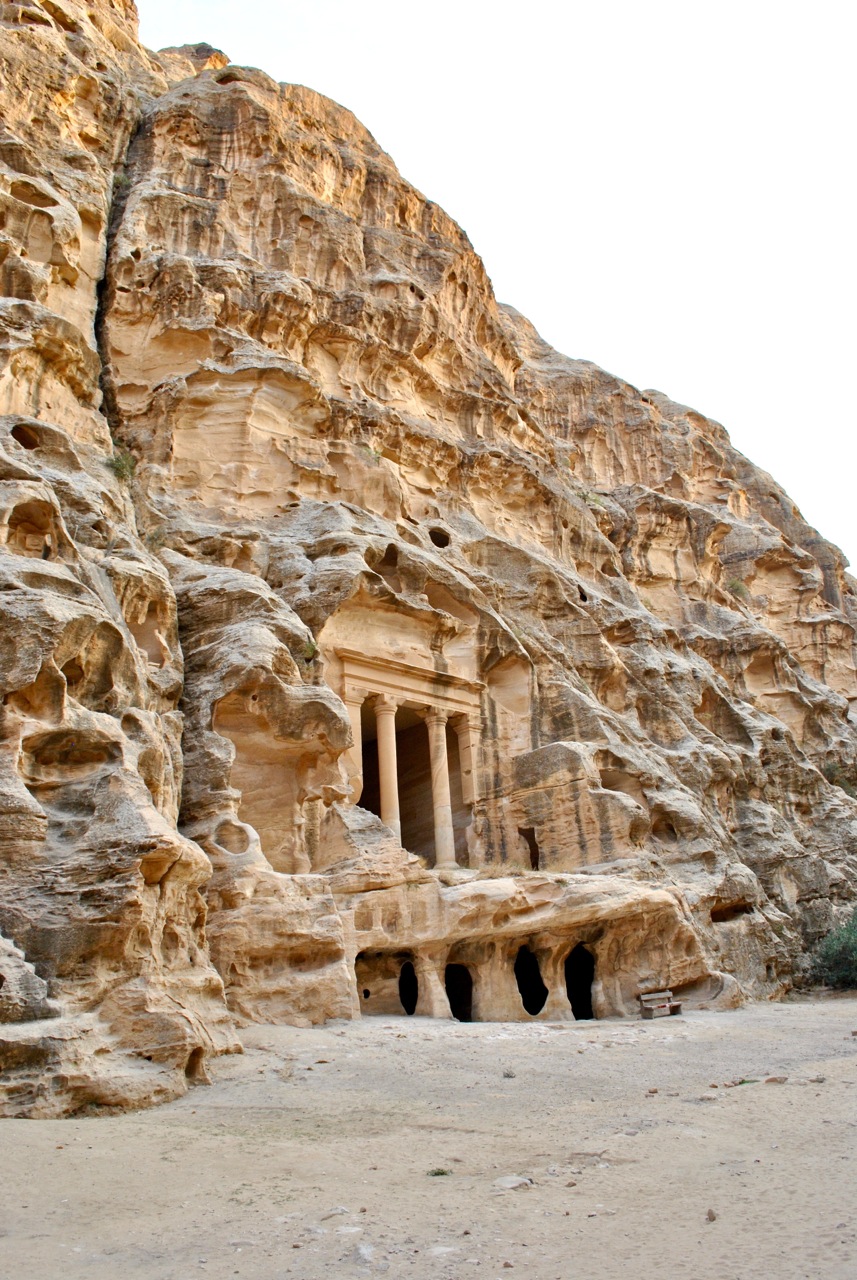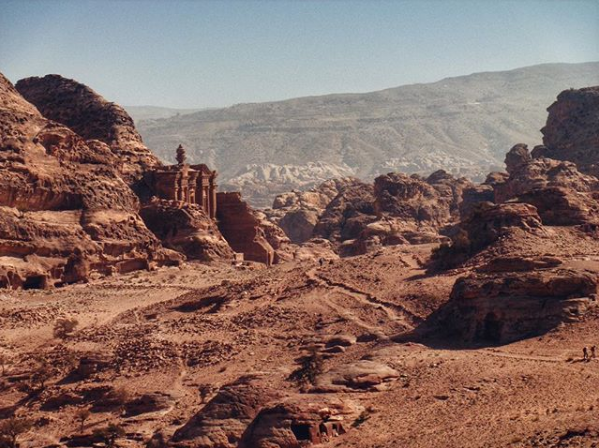Little Petra. Photo taken by Dr. Lucille Chauveau, @elle.sait on Instagram.
You’ve surely heard of Petra, but have you heard of Little Petra? If you haven’t, it’s not really surprising. Even though it is located very close to Petra, Little Petra often isn’t considered when visitors are planning their trip to Jordan. Today, we’re writing about this “off the beaten path” destination which is quite easy add to your Jordanian itinerary.
What is Little Petra?
An ancient entrance at Little Petra. Photo taken by Dr. Lucille Chauveau, @elle.sait on Instagram.
Little Petra, also known as Siq al-Barid which translates to the cold canyon, is an archaeological site located 8 kilometers (5 miles) to the north of Petra. As its name suggests, Little Petra is a smaller version of the Petra archaeological site and it is considered part of Petra’s UNESCO inscription making Little Petra itself a UNESCO World Heritage Site.
Historians believe that Little Petra was a suburb of Petra, established in the 1st century AD. Like Petra, it was built by the Nabataean people. Petra, then known as Raqmu, was the capital of the Nabataean Kingdom and at its peak was thought to have around 20,000 inhabitants. As Petra was the region’s trading hub, some archaeologists believe that Little Petra was the location where Petra’s more successful merchants lived and entertained important guests.
An ancient dwelling at Little Petra. Photo taken by @mazaamaza on Instagram.
It is unclear exactly when Little Petra was abandoned by the Nabataeans however Petra itself was abandoned at some point during the 7th century. The existence of Petra remained a mystery to Europeans until it was rediscovered by a Swiss explorer in 1812. Little Petra remained unknown for much longer. It was rediscovered by British archaeologist Diana Kirkbride in the 1950s and further excavated by archaeologist Brian Byrd.
To enter the Little Petra site, you have to enter through a narrow passage with high walls. The high walls are the reason why the area is known as “the cold canyon” in Arabic, as they prevent direct sunlight from entering the canyon for most of the day. After a couple hundred metres, the canyon widens and here you can find many openings in the walls that would have been used as living spaces. One of the most interesting sites of Little Petra is a colonnaded triclinium, a type of formal dining room. Researchers speculate that it was used as a temple however not much is known about the site.
Little Petra. Photo taken by Sean, @a_wandering_vagabond on Instagram.
As you continue through the site, the canyon will narrow again. After a short distance, you will arrive at a second open area with more openings in the walls. These areas were thought to be where important guests were brought to be entertained by the local successful Nabataean merchants.
In the 1980s, archaeologists discovered the remains of a fresco painted on the ceiling of one of the dwellings. The fresco was covered in soot from Bedouin campfires and graffiti (similar to what you will find on the inside of the tombs at Petra) and the discovery was not made public until 2010. In 2007, restorers from an art institute in the United Kingdom were hired to restore the painting and the finding was made public after their work was finished. Once announced, the area was opened to visitors. The fresco depicts a large variety of items including different types of grapes, birds, and a small child playing the flute to scare away the birds. This fresco is quite rare as although many good examples of Nabataean architecture and sculptures still exist, discovered Nabataean paintings are extremely rare. You will not find any Nabataean paintings at the main Petra site.
Little Petra is also located close to a Neolithic site called Beidha (or Bayda). Estimates date this site to as far back as 11,000 BC which means it could be one of the earliest human villages ever discovered. The Jordanian Ministry of Tourism and Antiquities is planning to promote and protect Beidha by investing money and building a visitor center at the site however, this work has not yet been completed.
An ancient staircase in Little Petra. Photo taken by @tot_errando on Instagram.
What should I know before visiting Little Petra?
Your first glimpse of the Monastery at Petra as you hike from Little Petra to Petra. Photo taken by Jayden Ordner, @jayden_ordner on Instagram.
Unlike Petra, which has by far the highest entrance fees for any historical site in Jordan, entrance to Little Petra is free!
Little Petra is less convenient to access compared to Petra, but as it is located near Wadi Musa, a taxi can be hired in Wadi Musa for a reasonable cost. If you are planning to visit Little Petra and then return to Wadi Musa, you can ask the taxi driver to wait for you while you visit the site.
A great option for visiting both Petra and Little Petra is to take a taxi to Little Petra in the morning and hike all the way back to Wadi Musa through Petra. This hike is about 12.6 km in total and is a great option for those who are looking to avoid the crowds. Little Petra is rarely crowded and due to the order in which you will see the sites, you will be visiting at a different time compared to the big crowds. You will finish the hike by visiting Petra’s famous Treasury before wandering through the Siq back to Wadi Musa.
The trail is not marked and so many people opt to hire a guide so that they don’t get lost. Fortunately, the Jordan Trail website now offers a map of the trail as well as the Google Map and GPS data that you can download so you don’t get lost. More information about this hike can be found here from the Jordan Trail.








